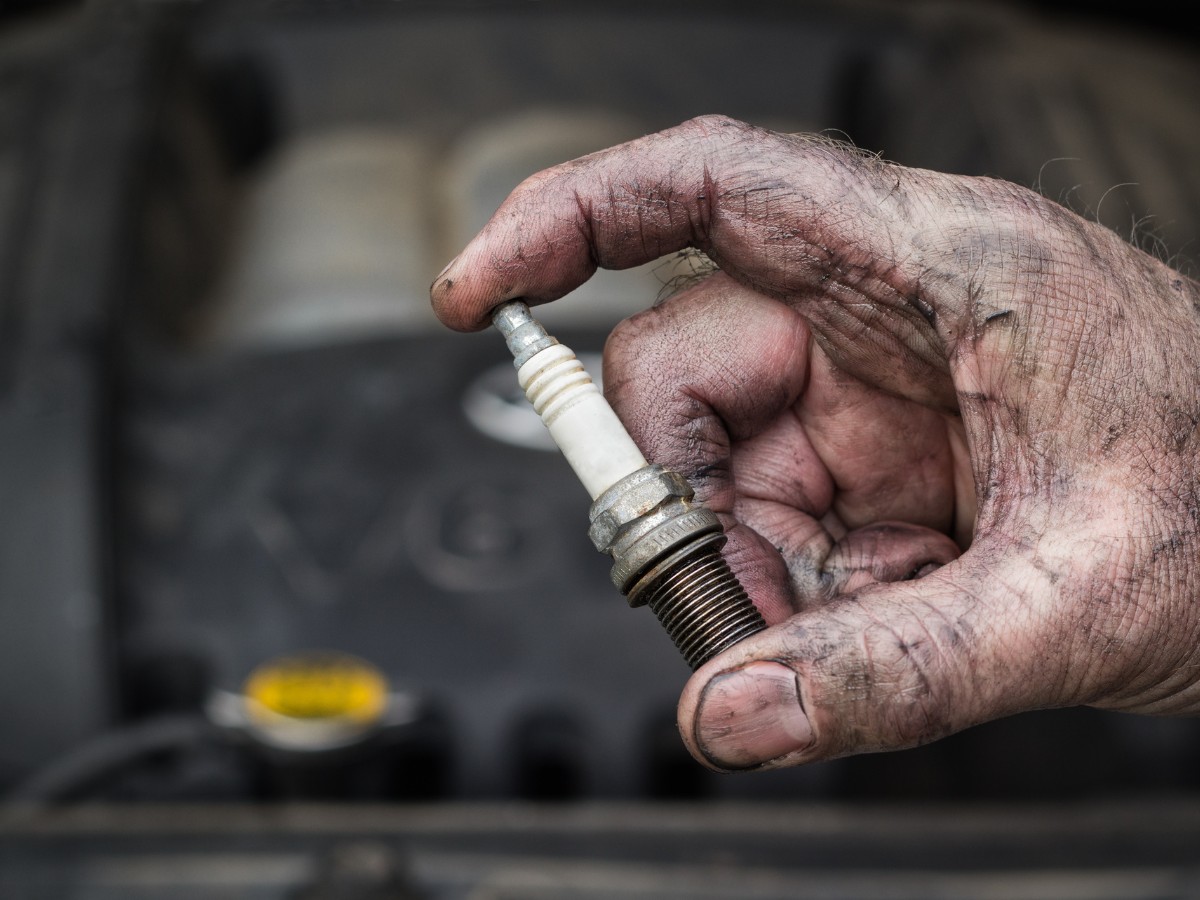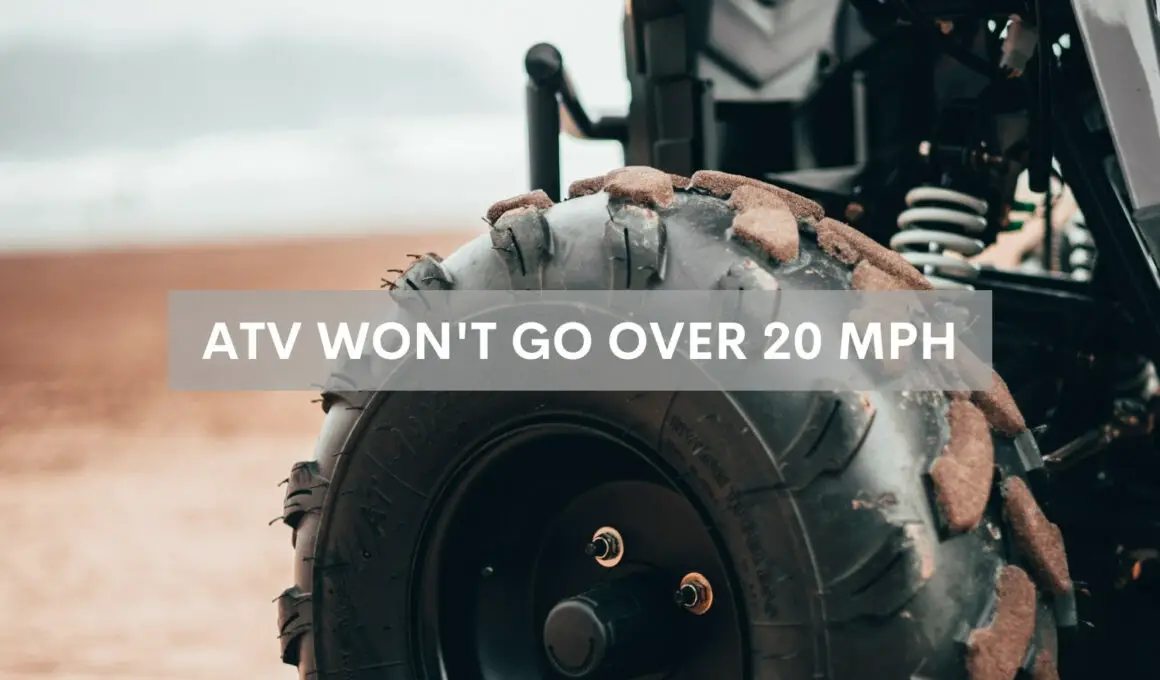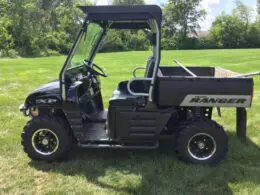In This Article Show
Having spent years as an expert in off-roading equipment, particularly ATVs and UTVs, I’ve come to appreciate the sheer joy of tearing through trails at top speeds. But what happens when your trusty ATV, which you’ve always relied upon, suddenly refuses to cross that 20 mph mark? It’s not just a bummer; it can be a real safety concern too.
In my extensive experience with ATVs and UTVs, I’ve encountered this issue more times than I can count. It’s vital to understand why this happens and, more importantly, how you can fix it.
Today, I’ll be sharing the most common causes for this frustrating slowdown and, of course, the solutions to get you back on the trail at full throttle.
Common Causes Why Your ATV Doesn’t Exceed 20 mph
1. Clogged Air Filter
The lifeblood of your ATV’s engine is the mixture of air and fuel. Without proper airflow, your ATV can’t breathe, let alone roar. A clogged air filter restricts this essential flow, causing reduced performance.
It’s a bit like trying to breathe through a straw – not very effective, right? Over time, dirt, dust, and debris accumulate in the filter, drastically affecting your ATV’s speed and overall efficiency.
2. Dirty or Clogged Carburetor
The carburetor is one of the most crucial components in your ATV. Responsible for mixing the right amount of air with fuel, a carburetor ensures the engine runs smoothly. When it’s dirty or clogged, the engine can’t get the proper mixture it needs.
This leads to a host of issues, including decreased speed. Picture this: a master chef trying to whip up a gourmet dish, but someone keeps tampering with his ingredients. That’s your engine with a problematic carburetor.
3. Throttle Issues
The throttle is your direct line of communication with your ATV’s speed. If it’s not responding well, neither will your vehicle. Issues can range from a simple misalignment or a stuck cable to more complex internal problems. When the throttle system is out of whack, it’s akin to trying to have a conversation with someone while both of you are speaking different languages.
4. Faulty Spark Plug
In my years specializing in ATVs and UTVs, I’ve learned the importance of the humble spark plug. This tiny component ignites the fuel-air mixture in the engine.
A faulty spark plug can hinder this process, leading to decreased power and, yes, that dreaded speed cap. Think of a spark plug as the matchstick for your ATV’s fire. If it doesn’t light up properly, neither will your ride.

5. Restricted Exhaust
The exhaust system is the ATV’s way of exhaling. If there’s any blockage or damage, your ATV struggles to release the burnt gases from the engine. This backup creates a significant reduction in power and speed. Imagine running a marathon while holding your breath.
Sounds tough, doesn’t it? That’s how your ATV feels with a restricted exhaust.
6. Transmission Problems
The transmission, in essence, dictates how power from the engine is distributed to the wheels. Any issues here, like worn-out gears or a lack of lubrication, can result in your ATV not achieving its top speeds.
From my time with off-roading equipment, I’ve often seen that a well-maintained transmission can make the difference between an exhilarating ride and a sluggish one.
ATV Won’t Go Over 20 mph: Diagnosing the Issue
1. Visual Inspection
Before diving into intricate tests, start with the basics. Often, the problem can be something overtly visible. Check your ATV for any noticeable damages, loose connections, or parts that seem out of place.
While this might sound rudimentary, especially coming from someone with extensive expertise in ATVs and UTVs, you’d be surprised how often the issue is something apparent.
2. Listen to Your ATV
Your ATV communicates with you, not through words, but through sounds. A misfiring engine, sputtering noises, or unusual sounds when accelerating can offer crucial clues.
A rough idle might hint towards carburetor issues, while a high-pitched whine could indicate transmission problems. Trust me; developing an ear for these nuances can be invaluable.

3. Check the Air Filter
Given its role in your ATV’s performance, the air filter should be one of the first things you inspect. Remove the filter and hold it up against a strong light. If the light struggles to come through, it’s high time for a cleaning or replacement.
4. Spark Plug Examination
Remove the spark plug and inspect its tip. A black, sooty appearance can mean it’s fouled, while a white, blistered tip could indicate overheating. Both these conditions can severely hamper your ATV’s speed. Remember, the spark plug should have a light tan or grayish appearance if it’s in good shape.
5. Throttle Response Test
With your ATV in neutral, gently twist the throttle. It should snap back immediately when released. If it’s sluggish or doesn’t return to its original position, you’re likely dealing with throttle issues.
6. Carburetor Inspection
A dirty carburetor often has visible gunk or buildup. While you might not diagnose all carburetor issues through a mere visual check, you can spot glaring problems like clogs or dirt accumulation.
7. Exhaust Flow Assessment
With your ATV running, place your hand (without touching) near the exhaust’s end. The flow should be consistent. If you feel intermittent bursts or a weaker flow than usual, your exhaust might be restricted.
8. Transmission Fluid Check
Examine the quality and level of your transmission fluid. If it’s low, murky, or has a burnt smell, your transmission might be the reason behind the speed issue. From my years with off-roading equipment, I can’t stress enough the importance of clean, adequately filled transmission fluid.
Fixes and Solutions: ATV Won’t Go Over 20 mph
1. Replacing or Cleaning the Air Filter
Step-by-step guide
- First, locate and remove the air filter from its housing.
- For a light cleaning, tap the filter gently to release loose dirt and dust.
- For a deeper clean, use a filter cleaning solution or warm soapy water. Ensure you rinse it thoroughly and let it dry completely before reinstalling.
- If the filter is too dirty or damaged, it’s best to replace it with a new one. Ensure the replacement matches your ATV’s specifications.
2. Cleaning the Carburetor
Tools needed: Carburetor cleaner, wrenches, screwdrivers, and a container for parts.
Step-by-step cleaning process
- Remove the carburetor from the ATV.
- Disassemble the carburetor, placing the parts in a container to avoid losing any.
- Spray carburetor cleaner on all parts and use a brush for stubborn areas.
- Allow the parts to dry fully.
- Reassemble and reinstall the carburetor.
3. Addressing Throttle Issues
Adjusting the throttle cable
- Locate the throttle cable adjuster, typically near the handlebars.
- Loosen the locking nut.
- Turn the adjuster until you achieve the desired tension, ensuring the throttle snaps back when released.
- Tighten the locking nut.
Checking for obstructions
- Examine the path of the throttle cable to ensure it’s not pinched or obstructed.
- Replace the cable if it’s frayed or damaged.
4. Changing Spark Plugs
Choosing the right spark plug: Refer to your ATV’s manual for the correct spark plug type and gap settings.
Replacement process
- Remove the old spark plug using a spark plug socket.
- Check the gap of the new spark plug with a gap tool and adjust if necessary.
- Install the new spark plug, ensuring it’s tightened correctly, but avoid over-tightening.
5. Checking and Cleaning the Exhaust System
Safety precautions: Always ensure the ATV is off and cool to the touch before working on the exhaust.
Cleaning and maintenance tips
- Remove the exhaust system.
- Inspect for any obstructions or damage. Use a flashlight to check the inside.
- Clean the inside with a suitable cleaning solution, ensuring it’s fully rinsed and dried.
- Reattach the exhaust system, ensuring all connections are secure.
6. Transmission Maintenance and Repair
Recognizing when professional help is needed: If you’re unsure about the state of your transmission or find the task daunting, consult a mechanic.
Basic maintenance tips
- Check the transmission fluid regularly. Refill if it’s low, and ensure you’re using the correct type.
- Change the transmission fluid as recommended by your ATV’s manufacturer.
- Inspect the transmission for any visible damages, such as leaks or worn belts.
Preventative Measures: Keeping Your ATV at Peak Performance
1. Regular Maintenance
Routine check-ups are the backbone of a well-functioning ATV.
Steps
- Stick to the maintenance schedule provided in the ATV’s manual.
- Even if everything seems fine, perform a quick visual inspection before every ride.
2. Clean After Every Ride
Dirt, mud, and debris are inevitable when off-roading. However, letting them sit can lead to more significant problems.
Steps
- Rinse off mud and dirt from the ATV using low-pressure water.
- Clean the air filter after dusty or muddy rides.
- Wipe down and inspect the ATV to ensure no foreign objects are lodged in any parts.
3. Store Properly
How and where you store your ATV can have a significant impact on its lifespan and performance.
Recommendations
- Use a breathable cover to protect from dust and debris.
- Store in a dry and cool place, away from direct sunlight.
- If storing for an extended period, disconnect the battery and elevate the ATV to prevent tire damage.
4. Use Quality Fuel and Oil
What goes into your ATV plays a huge role in its performance.
Tips
- Opt for higher octane fuel; it can help prevent knocking and ensure a smoother ride.
- Change the oil regularly using the recommended type for your ATV.
- Consider using a fuel stabilizer if the ATV isn’t going to be used for an extended period.
5. Protect the Carburetor
The carburetor is susceptible to clogging, especially if the ATV is not used regularly.
Steps
- Use fuel additives that prevent carburetor gunk buildup.
- If storing the ATV, drain the carburetor to prevent stale fuel from settling.
6. Rotate and Check Tires
Unbalanced or worn-out tires can affect speed and overall performance.
Recommendations
- Regularly inspect tires for signs of wear, cuts, or punctures.
- Maintain the recommended tire pressure.
- Rotate tires occasionally to ensure even wear.
7. Pay Attention to Sounds and Changes
The earlier you catch an issue, the easier (and often cheaper) it is to fix.
Advice
If your ATV starts behaving differently or making unusual noises, investigate immediately.
Regularly test throttle response, brakes, and other vital systems, even if everything seems fine.
Incorporating these preventative measures can drastically improve the longevity and performance of your ATV. Not only will they ensure your rides are smoother and more enjoyable, but they’ll also help avoid bigger, more costly problems in the long run.















